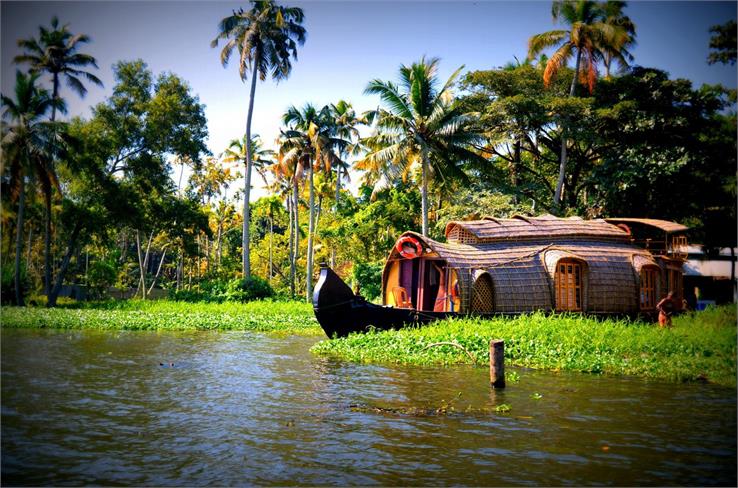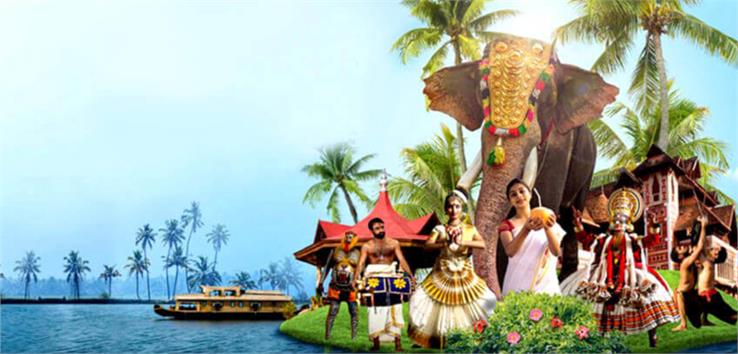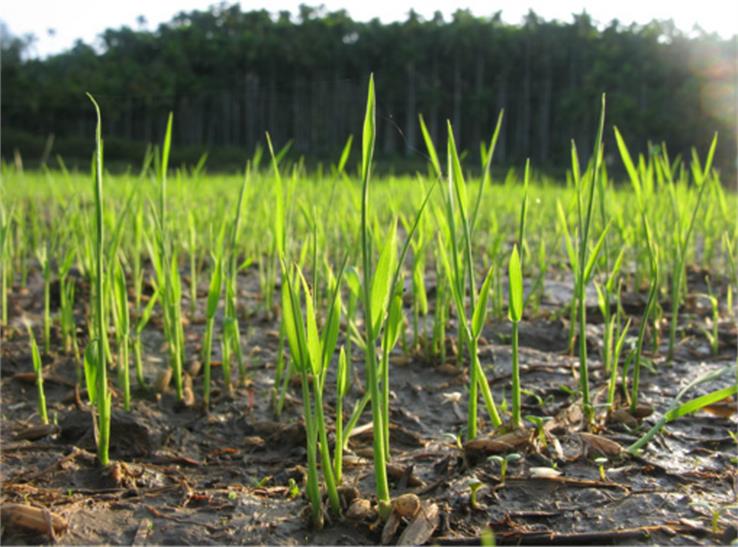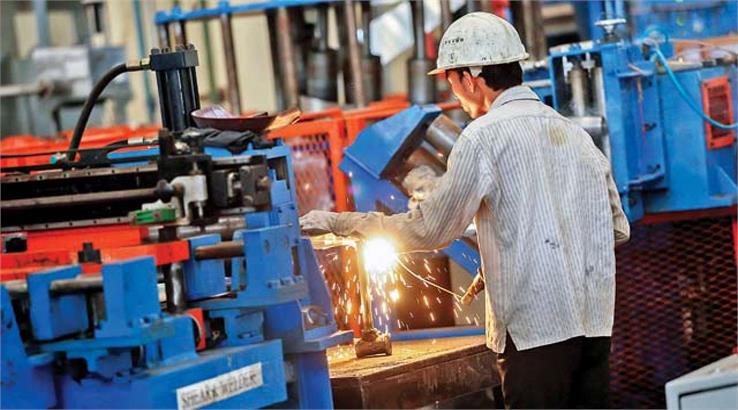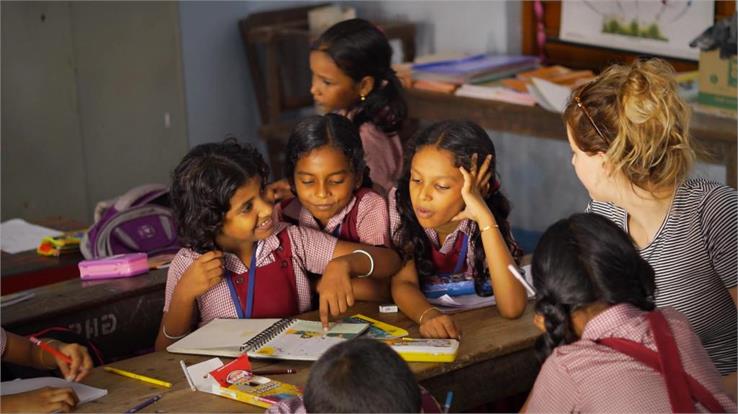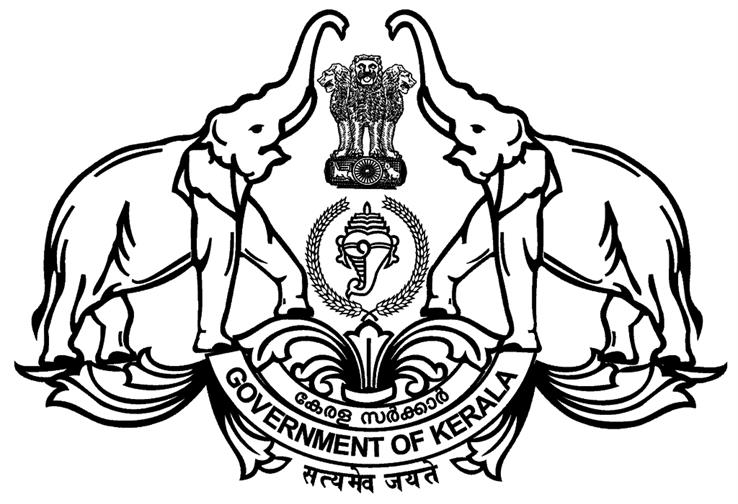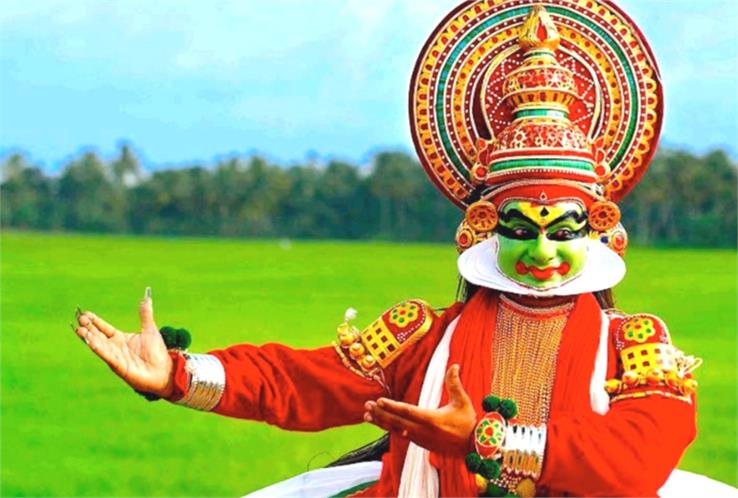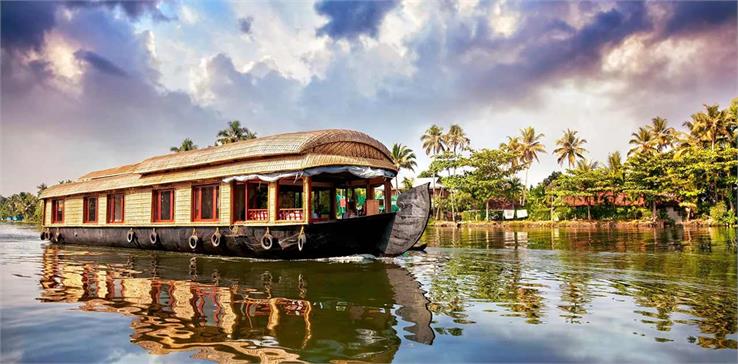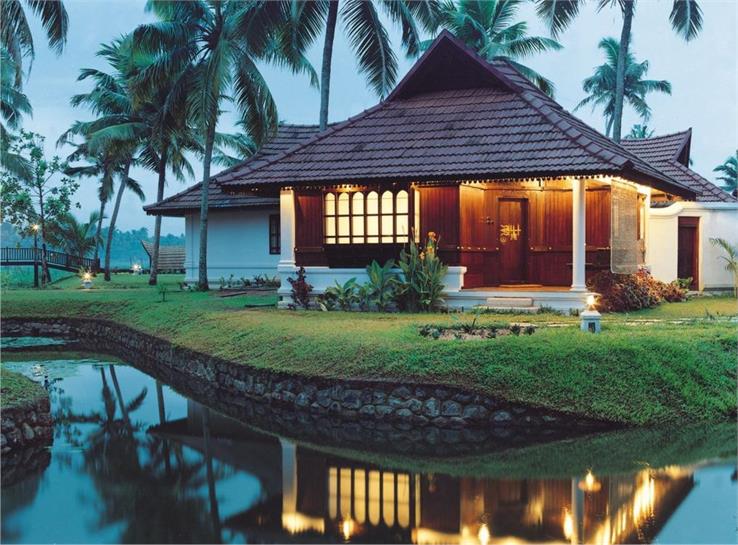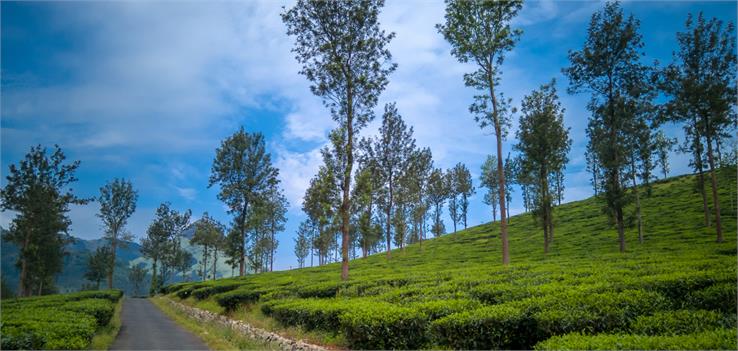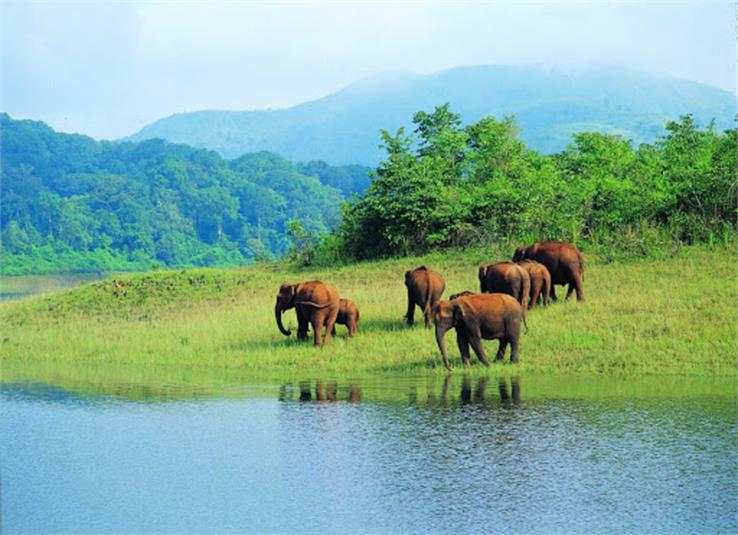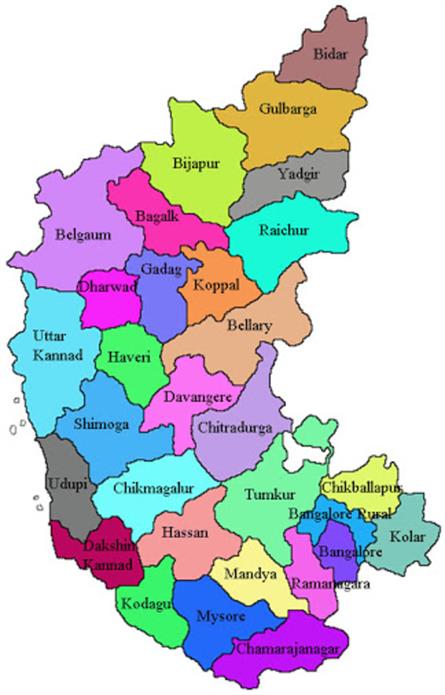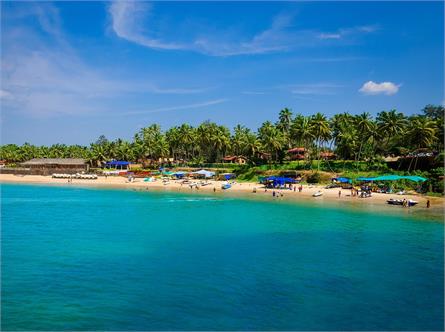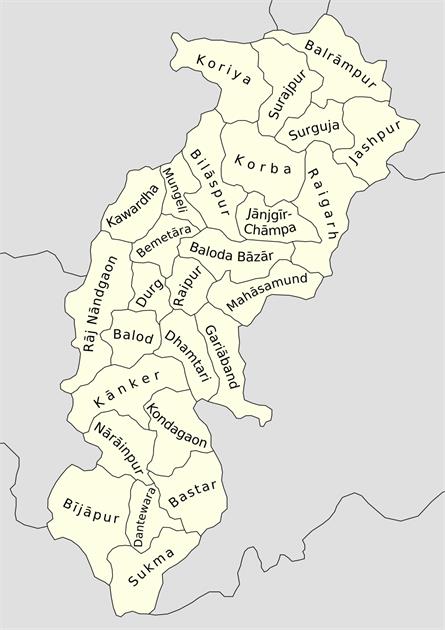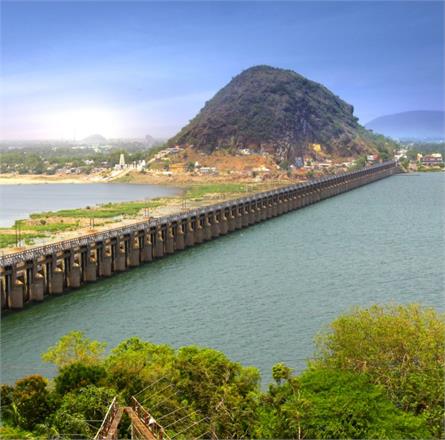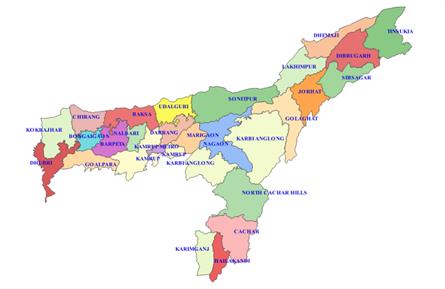Kerala - God’s Own Country
Famous as ‘God’s Own Country,’ Kerala is a southwest corner of India, which has an area of 38,863 sq km and a population of about 3.48 crores. Kerala is known to be the best state in India, and without a doubt, it is said to be paradise on the land of India. It is full of coconuts and elephants, which contributes to the rich biodiversity and cultural heritage of the state. Moreover, captivating beauty, lagoon, and backwaters of Kerala attract around ten million tourists every year.
Kerala borders the sea on one side and Karnataka and Tamil Nadu on the other. Thiruvananthapuram, also known as Trivandrum, is the capital of Kerala and its Kovalam beach is famous worldwide. Kerala is also known as the ‘Spice Garden of India.’
History
The culture of Kerala is formed by the influence of dynasties around the world, and people from different cultures have settled here.
According to mythology, Parashurama threw his halberd into the sea. Due to which, the land of that size came out of the sea, and Kerala came into existence. Evidence of human settlement has been found here from the 10th century BC.
Scholars are not unanimous about the etymology of the word ‘Kerala.’ It is commonly said, the term Kerala is derived from the sum of words ‘Cher - land,’ ‘mud,’ and ‘Alum - Pradesh.’ The title Kerala also implies-terrain, which originated from the sea or the confluence of the sea and the mountain. Kerala is also called Malabar by ancient foreign travelers.
Thousands of years ago, Kerala was inhabited. Initially, people lived in mountainous areas. Some of the ancient stone age ruins are derived from some parts of Kerala. The ancient ruins are followed by superstructure souvenirs that give authentic information about the occupation of humans in Kerala, mostly in cremation form. Most of the megalithic epochs were derived from the mountainous region (evidence that the original domicile was there).
When Kerala got its statehood?

Although the history of Kerala dates back to the Christian era, modern Kerala was created on 1 November 1956 when all the states were reorganized on the basis of language. Kerala is different from the rest of India in many ways. Kerala has the highest literacy rate and the lowest infant mortality rate in India. The population of women is higher than men in the state. It is often compared to the society of developed countries.
Geography
Situated amidst the Western Ghats in the east and the Arabian Sea in the west, the state holds a 590 km long coastline. The state roughly divided into three distinct regions: Eastern Highland, Central Midland, and Western Lowland. Kerala is very rich in rivers and ponds. The height of the Western Ghats is about 4920 ft (1500 m) above sea level, its highest peak being 8200 ft (2500). The coastal belt is almost flat and has an extensive network of many canals, lakes, and rivers known as the backwaters of Kerala. There are 44 rivers flowing in Kerala, out of which 41 are flowing through the west, and the remaining three are flowing in the east. These rivers enhance the natural wealth of Kerala with its tributaries and sub-streams. The main attractions of Kerala are its marine lakes. The main rivers of Kerala are Murla, Tamraparni, Netravati, and Saraswati.
Kerala has a total of 14 districts, each of which is famous for its unique destination and temptation.
- Idukki
- Wayanad
- Kottayam
- Malappuram
- Kozhikode
- Kasaragod
- Alappuzha
- Kannur
- Ernakulam
- Kannur
- Pathanamthitta
- Thrissur
- Kollam
- Palakkad
- Thiruvananthapuram
Climate
Kerala is situated at an interval of only 8 degrees from the equator, due to which the weather of Kerala is warm. The main feature of the climate of Kerala state is “the cold downpour and heavy rainfall.” The main Rainy season begins with the western monsoon. The second rainy season comes with the northwest monsoon. Kerala rains for about 120 to 140 days every year. Heavy rains in Kerala also cause floods, prompting the considerable loss of lives and wealth.
Demography
Kerala has a total population of 3.48 crores, and its population density is 860 people per sq km. The sex ratio of Kerala is very impressive, which is 1,084 females per 1,000 males. The growth rate of the population is 4.91% according to the census 2011, while according to statistics of the previous decade, it was 9.42%. The population of the original tribes in the state is 1.10 percent of the total population. According to the 2011 census, 54.73 percent of the population of Kerala is Hindu, 26.56 percent are Muslims, and 18.38 percent are Christians. The people of the remaining religions belong to 0.33 percent. Kerala has a literacy rate of 93.91 percent.
Economy
Geography and geographical factors severely affect the economy of Kerala. There is not enough arable land available for the dense population here. In spite of this, Agriculture is the largest contributor to the state’s income. More than half of the state’s population relies on agriculture for income, where rice is the main crop and staple food of Kerala. Other major crops are coconut, tea, rubber, cashew, black pepper, vanilla, cardamom, cinnamon, and nutmeg. The state also lacks major reserves of fossil fuels and minerals. However, ilmenite (the major ore of titanium), rutile (titanium oxide), monazite (minerals containing cerium and thorium phosphate) are only found in beach sand. Kerala has a lot of prospects of hydropower. Idukki Complex is the largest power generation plant of KSEB Limited (Kerala State Electricity Board Limited).
The primary and traditional sources of exports are coir, cashew, and marine products. Black pepper is the main product of spices, and Kerala is its largest producer and exporter. Cardamom and ginger are also exported from Kerala. Fisheries is also a significant industry of the state.
Agriculture

The specialty of agriculture in the state of Kerala is, business crops are grown on a large scale. About 50 percent of citizens of the state depend on agriculture. Coconut, rubber, black pepper, ginger, tea, cardamom, cashews, and coffee, etc. are predominantly produced in Kerala. Other crops are betel nut, banana, ginger, and turmeric, etc. Spices of cinnamon, nutmeg, cloves, etc. are also grown in Kerala. Rice and tapioca are the main food crops here.
Irrigation
Kerala also relies on surface water irrigation system for water supply, which is operated by the force of gravity. Large plots are intended for large and medium irrigation projects. The main function of the Command Area Development Program Authority is to make drains and implement fencing. The major activities of the Authority were in a total area of 2.03 lakh hectares with 16 complete irrigation projects, such as Malampuzha, Mangalam, Pothundi, Valayar, Chirakuzhi, Vazhani, Peachy, Chalakudy, Nayar, Gayatri, Pampa, Periyar Valley, Chittarapuzha, Kuttiyadi, Pazhachi, and Kanjirpuzha. The command area development programs are running with the financial assistance of the Government of India. The achievements of 2004-05 include canals (in 1998 hectares), drains (6156 hectares), testing of the system (in 10 hectares), and conducting 83 training programs (in 2302 hectares).
Infrastructure
Kerala is well connected to the country by air, road, and rail. The basic amenities of Kerala are outstanding, and the network of motorable roads here is 1,45,704 km. The total length of the National Highway here is around 1524 km. From other states, Kerala can be reached via NH 47 and 17. The Southern Railway line of Indian Railways connects major cities and towns of the state besides Idukki and Wayanad district. The state’s rail network is controlled by the Thiruvananthapuram railway division and the Palakkad railway division.
Industry

There are innumerable possibilities of industrial development in Kerala. Hydropower, dense forests, rare minerals, transport, and a reliable communication system, all necessities are available here. Important industries of Kerala include cashew nuts, handicrafts, coir, rubber, tea, handloom, porcelain, telephone, bricks and tiles, electronic equipment, transformers, medicines and chemicals, beedis, oils, general engineering goods, soaps, cigars, plywood, ranger, telephone wires, fertilizers, Khadi, and village industries products. Moreover, there are some factories in the state for the production of machine tools, non-ferrous metals, pulp, petroleum, paints, fine tools, newsprint, glass, and paper. The significant items exported are cashews, tea, spices, lemongrass oil, seafood products, rosewood, and coconut fiber.
Industrialization
Most of the population is unaffected by industrialization. The problem of unemployment is severe, and a high level of education among unemployed people makes this problem more acute. Maximum workers engage in traditional, low-wage cottage industries, such as processing or weaving coconut fibers and cashews. More than one-fourth of the workers in Kerala are in the service sector. Food processing is the most extensive means of industrial employment. Other products include fertilizers, chemicals, electrical equipment, titanium, aluminum, plywood, ceramics, and synthetic fibers.
Information Technology
Information technology and its ability to make maximum use is an important aspect. The Government of Kerala has taken several steps for the development of information technology in the state. Chief among are -
- Technopark, Thiruvananthapuram (first international-level IT center in India).
- E-Governance initiatives of the State Government, e.g., Friends (Fast, Reliable, Instant, Efficient Network for Disbursement of Services).
- KINFRA Hi-Tech Park in Kochi.
- Renewable Program of Kerala Information Technology Mission.
Presently there are 84 international and domestic companies in the complex, with an investment of Rs. 634.25 crore.
Kerala has the distinction of being the second-best state in India in terms of e-governance. Friends (Fast Reliable Instant Efficient Network for Disbursement of Service) is a one-stop settlement system where citizens pay all taxes and other financial dues to the government.
In August 2004, the Government of Kerala had introduced the facility of bills payments through renewable e-centers as an extension of the ‘Friends Project’ in Malappuram district.
The first call center in the country has been set up in the state capital, Thiruvananthapuram. With this, ordinary citizens will be able to get knowledge about transactions made in various government departments through telephone.
Electricity
There has been considerable progress in the electrical system of Kerala in the last two decades. Initial stages of development were focused on the hydroelectric potential of the state. The Kerala power system has 30 power generation centers, of which 24 MW are for hydroelectric power, 5 for thermal power, and 1 for the windmill. Out of these, the Kerala State Electricity Board has 24 hydroelectric power, two thermal and one windmill.
Under the micro-hydro program, ANERT has taken up the implementation of meager hydroelectric projects in two district panchayats - Kammadi in Kasargod and Chakrakundu in Kozhikode district. The center has prepared a detailed project report on 30 small hydro projects in the state. Out of these, 13 small hydro projects have been allocated to the applicants under restricted power projects and independent power projects on a boot basis. The first 100 KW, a small power scheme, has been commissioned at Mankulam in the Idukki district. Two areas - Peshwai Kumbh in Kasaragod and Kalyanathandu in Idukki district have been selected for study under the National Wind Energy Resource Assessment.
In view of the ‘Rajiv Gandhi Rural Electrification Scheme’ launched by the Government of India, an outlay of Rs. 348.79 crore has been proposed to the Government of India to provide electricity to 3,578 houses in 9.30 villages in 14 districts of Kerala. The Government of India sanctioned Rs 221.75 crore for the first phase, which would involve power supply in seven districts. These districts are - Kasaragoud, Wayanad, Kannur, Kozhikode, Malappuram, Idukki, and Palakkad.
Education

Kerala has the most developed education system in India, with a literacy rate of 93.91%, which is higher than the national average. The cases of regional and gender discrimination in literacy rates is lowest in Kerala. It has primary, secondary, and higher secondary schools, in which primary education is compulsory for Children 6 to 11 years old. Kerala has grown as the first Indian state to achieve 100 percent primary education. Infrastructure created under the Sarva Shiksha Abhiyan, the district primary education program, and the contribution of local government have contributed to the improvement of facilities.
- The state has many vocational colleges, arts, polytechnic, science & technology, and industrial training institutes. Medical colleges are also located in Thrissur, Kannur, Kozhikode, Kottayam, and Thiruvananthapuram.
- Engineering colleges of the state include Kannur, Kochi, Ernakulam, Kasaragod, Kollam, Palakkad, Kottayam, Adoor, Kozhikode, Alappuzha, Thrissur, and Thiruvananthapuram.
- Some of the Ayurvedic Universities are located in Ollur, Kottakkal, Tripunithura, Thiruvananthapuram, and a dental college at Kozhikode.
Some of the renowned universities of Kerala include:
- Kerala University
- Sri Chitra Tirunal Institute for Medical Science and Technology
- Sri Shankaracharya Sanskrit University
- Kannur University
- Calicut University
- Mahatma Gandhi University
Government and Politics

Kerala has two major political coalitions, the United Democratic Front (UDF) headed by the Indian National Congress and the Left Democratic Front (LDF), directed by the CPIM. Currently, Pinarayi Vijayan was elected by the CPI(M) as Chief Minister of Kerala in May 2016, following the 2016 Legislative Assembly election. Vijayan was selected as the leader of the Left Democratic Front government. On 25 May 2016, along with his 19-member cabinet, he was declared in front of a large number of party workers. Kerala has 140 assembly constituencies. The judiciary here consists of the Kerala High Court and the lower courts. The High Court is located in Kochi, and the Kerala Legislative Assembly building, as well as the Kerala Secretariat, are in Thiruvananthapuram. The local governing body is made up of panchayats, municipalities, and municipal corporations.
Wildlife
In the Wildlife Sanctuary of Kerala, you will find almost all kinds of animals, sea creatures, and birds. One can also find some scarce species in Kerala. Some of these animals are - Nilgiri tahr, tiger, leopard, elephant, macaque, deer, moth, crab, mudskipper, and many more. The worth seeing Wildlife Sanctuary of the city are:

- Chinnar Wildlife Sanctuary
- Periyar Tiger Reserve
- Thattekad Bird Sanctuary
- Eravikulam National Park
- Idukki Wildlife Sanctuary
- Periyar Tiger Reserve
- Silent Valley National Park
- Wayanad Wildlife Sanctuary
- Kumarakom Bird Sanctuary
Society and Culture

The culture of Kerala is indeed an integral part of Indian heritage. Like the Indian subcontinent, the culture of Kerala also has an archaic history that claims to be significant in itself. Kerala also has a holistic and cosmopolitan lifestyle in which many people and castes have contributed significantly. The spirit of inclusive and diversified tolerance and generosity of attitude among the people of Kerala is still alive to develop the leadership quality. The history of Kerala represents a romantic and fascinating story of a unique process of cultural and social synthesis. Kerala has shown the best of its talent in every field, responding to every challenge and, at the same time combining old traditions and new values with human facts.
Due to the nature of unity, universality, continuity, and antiquity of Kerala, the culture of the state reflects the age-old medium. Kerala’s Physical Quality of Life Index is the highest. The nature of Kerala people has always been twisted, so people have roamed almost all the countries. Malayali culture also has a flavor of its own, being part of Indian and Dravidian culture. The reason for this is the unique geographical position here. Surrounded by the Western Ghats in the east and the Arabian Sea in the west, Kerala remained as an island for a long time. The result is seen in their different language, clothes, culture, and institutions.
Language
The main language of Kerala is Malayalam, as it is the most spoken language of the state. It is a fundamental Dravidian language, but historical events have influenced its development and its vocabulary. Kerala has a prominent place among the four states in the south of India due to its culture and language-specificity. The English language also holds a leading position in the state of Kerala.
Transportation
Kerala has a well-developed road and rail network. It is connected to the states of Tamil Nadu and Karnataka by national highways. Coastal and foreign vessels operate from the three major ports - Kozhikode, Kochi-Ernakulam, and Alappuzha. Kochi-Ernakulam also has a major ship and refinery plant and is also the headquarters of the Indian Coast Guard and Naval Command. 1,770 km of inland waterways are used to transport and carry bulky goods from ports. There is an international airport in Thiruvananthapuram and airports for domestic flights in Kozhikode and Kochi.
Roadways
Kerala is the first state in the country to have 100 percent roads to its remote villages.
Railways
The state has 13 railway routes under 1,148 km long railway lines. The major rail line is 1,053.86 kilometers, and the short line 94.14 kilometers long.
Airways
The three major airports in the state are at ‘Thiruvananthapuram,’ ‘Kochi’ (Nedumbassery), and ‘Kozhikode.’ The first two of them are international airports.
Fair and Festivals

- Many colorful festivals are celebrated in Kerala. Most of these festivals are religious, inspired by Hindu mythology.
- Onam is the unique festival of Kerala, celebrated during the harvesting season. The festival is organized on the occasion of the astronomical New Year.
- In Kerala, Navratri is celebrated as Saraswati Puja.
- The festival of Mahashivratri is celebrated in a grand manner on the banks of the Periyar River.
- Makarvilakku is also held at the Ayyappa temple in Sabarimala. Millions of people from all over the world participate in this 41-day festival.
- Vallam Kali or boat race is a bizarre event of its own in Kerala. Except for the Nehru Trophy Boat Race held at Lake Punnamada, all other boat racing festivals have some religious significance.
- Pooram Festival is celebrated every year in April at the Vadakkunnathan Temple in Thrissur, with a grand procession of well-dressed elephants and fireworks display.
- Christmas and Easter are the biggest festivals of Christians. The Maramon Conference takes place every year on the banks of the Pumba River, where the largest gathering of Christians takes place in Asia.
- Muslims celebrate the festivities of Milade Sharif, Ramzan Roza, Bakrid, and Eid-ul-Fitr.
Traditional Attire of Kerala

The traditional dress in Kerala is called Mundu and Neriyatu, which is for both men and women. Women of Kerala traditionally wear sarees. Mundu is very popular in the state and is worn by men. It is an elegant dress, often used for ceremonial purposes.
The Mundu Nerihathu of women has an upper shawl. White-colored clothes have been given the most importance in the state. Presently different colored Mundu and Nerihathu are available in the market.
Best time to Visit
The time between September and February is considered to be excellent for visiting Kerala. Summer is sweltering here, and monsoon occurs with heavy rains, so winter is best for the tourists.
What to Eat?
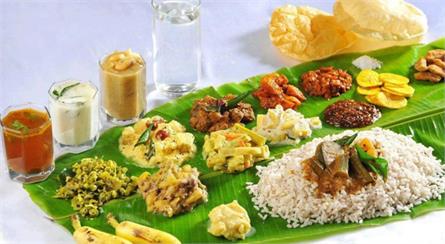
Kerala cuisine is a combination of vegetables, meats, and seafood with a wide variety of spices. Spices such as black pepper, cardamom, cloves, ginger, and chili are most commonly used in rice, coconut, seafood, and non-vegetarian dishes. Food in Kerala has its share of vegetarian dishes, including various tubular and root-based vegetables, as well as the use of beet-root, ginger, garlic, and onions along with animal milk.
Therefore, the food here is a balanced mix of non-vegetarian and vegetarian preparations. Traditionally, food is served on a banana leaf in Kerala, and almost every dish prepared in Kerala has coconut and spices to taste the local cuisine.
Shopping
‘God’s Own Country’ is one of the best shopping destinations in India. Shopping in Kerala is a big attraction if you want to spend a holiday here. Indigenous handicrafts have proved that they can attract crowds. In the beautiful handicrafts of this land, you can easily see the deep impression of the fusion of culture, tradition, religious stories, and aesthetics.
AlightIndia has made a list of adorable items, which travelers can take with them from God’s own Country.
- Coconut shell creations,
- metal inlay wooden crafts,
- jute products,
- horn products,
- wood carved products,
- bamboo mat paintings,
- fragrant spices
- metal utensils, etc.
Kathakali motifs are some handicrafts, majorly being sold. The places where these handicrafts are made should also be a part of one’s itinerary. A mind-boggling outfit, unmatched use of diverse colors, exquisite embellishments, and beautiful handicrafts are true representatives of this alluring state.
Place to see
If you are looking for a place for your vacation, where you will get a peaceful atmosphere with a spectacular natural view, you feel refreshed, both your body and soul feel calm, then Kerala is the only place in India. Looking at the beauty of Kerala, it is called the country of God. Kerala is such a place where any holiday can be spent, be it a honeymoon, vacation, holiday, or a family trip. The best places to visit in Kerala are:
Alappuzha - Venice of India

Immensely famous for its beautiful backwaters, Alappuzha (or Alleppey) city of Kerala is also known for beaches, temples, and traditional boat races. This popular tourist destination also houses some famous Ayurvedic spas and wellness centers. Alleppey (also known as Alappuzha) is the oldest backwater city in Kerala. The place is renowned for various rivers which are on the shores of the sea and is home to many canals, backwaters, beaches, and lagoons. Alleppey is often referred to as the ‘Venice of India’. Traveling to Alleppey in backwater houseboats and seeing a glimpse of rural life can be the best experience of life.
Munnar - Beautiful Hill Station
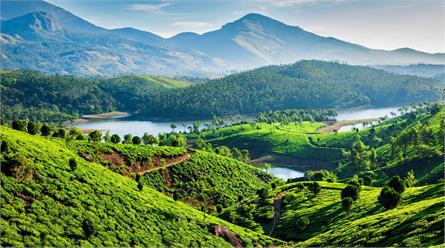
One of the largest tea-garden areas in South India, Munnar is one of the most’ beautiful and popular hill-stations’ in Kerala. It is known as the commercial center of some of the world’s largest tea estates. Apart from this, Munnar has many protected areas that are home to endangered species like Eucalyptus, Thar, and Neelakurinji. Located on the banks of three rivers - Mattupetty, Nallathanni, and Periyavaru, Munnar is also blessed with natural viewpoints besides tea-gardens. Eravikulam National Park, Salim Ali Bird Sanctuary, and Tea Gardens are the major attractions of the city.
Kumarakom

Kumarakom is a village on Vembanad Lake in the backwaters of Kerala, southern India. Kumarakom, part of the Kuttanad region, has beautiful water areas, and this is the most famous tourist center of Kerala. Traveling from Alleppey to Kumarakom, one can enjoy a cruise or houseboat. Some fishing and canoeing options will make the trip to Kumarakom more memorable.
The backwater resort of Kerala Tourism Development Corporation has independent cottages built on stilts, which has panoramic views of the set and backwaters among the coconut trees. The Kumarakom Bird Sanctuary located here is spread over 14 acres. Migratory birds like egrets, darters, heron, waterfowl, cuckoos, wild ducks (Mallard), and Siberian crane flock can be spotted and definitely fascinate tourists.
Wayanad - Outstanding Tourist Destination

With towering waterfalls, historical caves, cozy resorts, and homestays, this popular city is famous for its spice gardens and wildlife. Wayanad, one of the most beautiful areas of Kerala, is an ‘outstanding tourist destination.’ A part of the forest reserve, Wayanad lies on the border of Tamil Nadu and Kerala. The entire region is lush with mountain ranges and Tholpetty in the north, Muthanga in the east with Tamil Nadu, Kalpetta in the south, and Sultan Bathery in the east. Overall, Wayanad is a great place to celebrate the weekend in South India.
Kerala and tourism are almost synonymous. The lush tropical greenery, coconut trees, floats wafting on the murky waters, temples, the aroma of Ayurveda, rare lakes, canals, and islands, etc. make Kerala a perfect spot of tourism. It is a piece of heaven with all-natural beauty in India.


